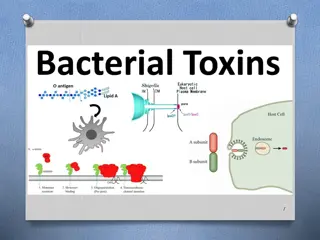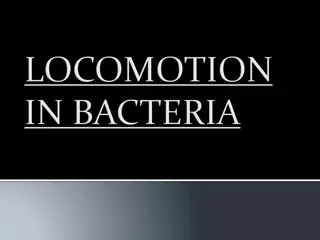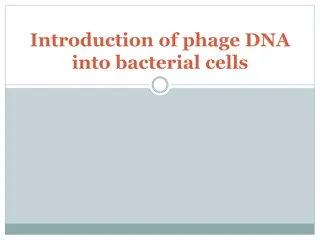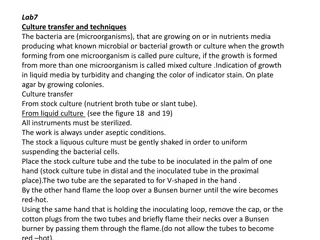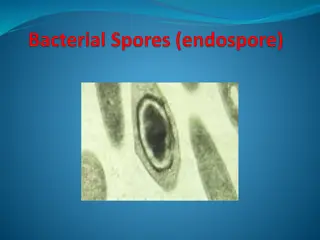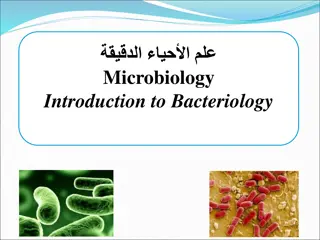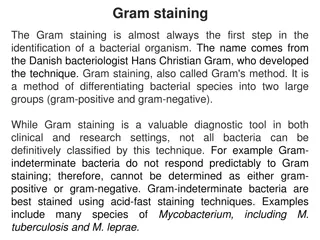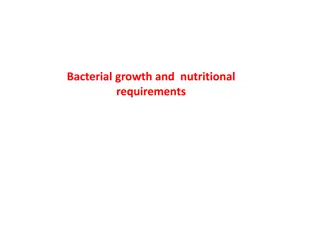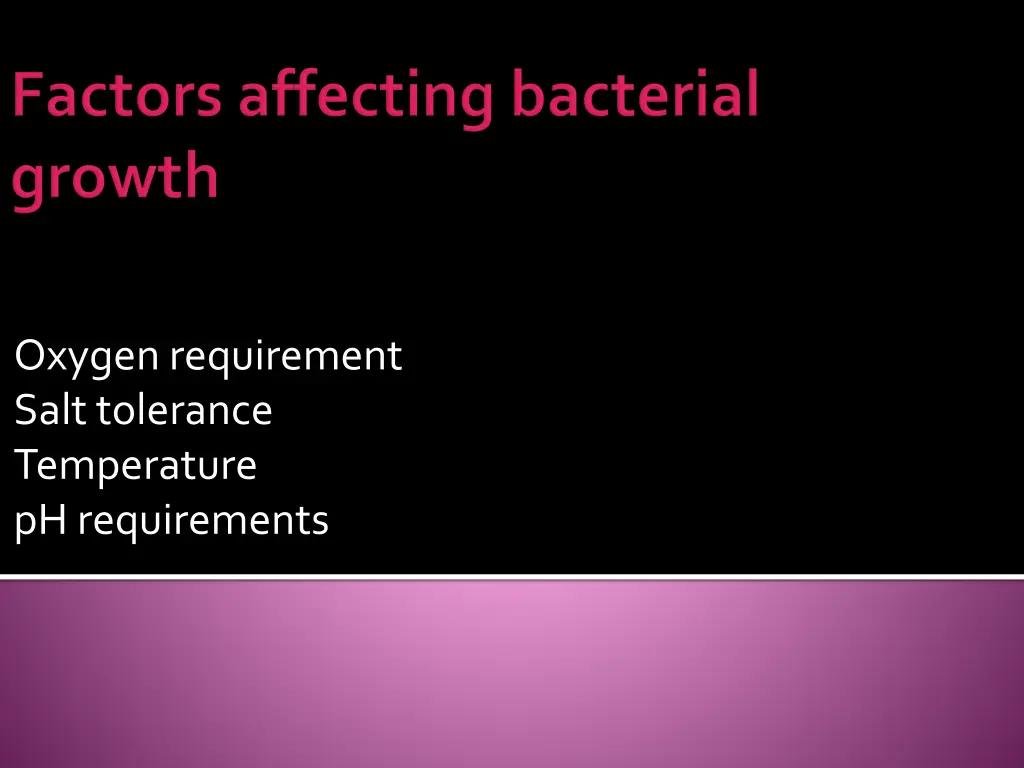
Understanding Bacterial Growth Requirements and Techniques
Explore the essential factors influencing bacterial growth, including oxygen requirements, salt tolerance, temperature, and pH preferences. Learn about different bacterial classifications based on oxygen needs and how to create anaerobic conditions for specific studies. Discover the impact of moisture, salt concentration, and pH levels on bacterial proliferation and how to manipulate these conditions.
Download Presentation

Please find below an Image/Link to download the presentation.
The content on the website is provided AS IS for your information and personal use only. It may not be sold, licensed, or shared on other websites without obtaining consent from the author. If you encounter any issues during the download, it is possible that the publisher has removed the file from their server.
You are allowed to download the files provided on this website for personal or commercial use, subject to the condition that they are used lawfully. All files are the property of their respective owners.
The content on the website is provided AS IS for your information and personal use only. It may not be sold, licensed, or shared on other websites without obtaining consent from the author.
E N D
Presentation Transcript
Oxygen requirement Salt tolerance Temperature pH requirements
Moisture All living organisms need water for normal metabolic processes. Moisture is necessary for growing and reproduction of bacteria.
Bacteria are divided according to Oxygen requirement: Obligate (Strict) aerobes: grow only in presence of oxygen. Obligate (Strict) anaerobes: grow only in absence of oxygen. Facultative anaerobes: grow in presence or absence of oxygen. Microaerophilic organisms: grow in small amount of oxygen.
O2 conc. High Low
This system uses a GasPak generator, that generate H2 and CO2 upon the addition of water. It should be in sealed jar. Place the anaerobic indicator strip inside the anaerobic jar, and expose it so that the wick is visible from outside. Methylene blue is blue in the presence of oxygen but is colorless in an anaerobic environment. A Palladium catalyst in the lid of the jar is to increase the reaction between H2 and O2 to form H2O. Incubate at 37 C, for 24- 48 hrs.
The effect to which salt concentration causes changes in bacterial growth depends on the osmotic balance required for such growth. Some bacteria require a high level of salt to grow, whereas other bacteria would be killed in high levels of salt.
1. Low salt conc.=1% NaCl (1 g of NaCl in 100 g of NA). 2. Moderate salt conc.= 5% NaCl (5 g of NaCl in 100 g of NA). 3. High salt conc./ halophilic= 9% NaCl (9 g of NaCl in 100 g of NA).
Most bacteria grow between pH 6.5 - pH 7.5 (neutral pH) especially pathogenic and food spoilage bacteria. Optimum pH range is usually quite narrow so that small changes in the pH can have large effects on the growth rate of the organism. Acidophilic microbes :very few can grow below pH 4.0 ( yeast and molds have much greater tolerance to acidic pH) Alkalophilic microbes: very few can grow above pH 8.0
Temperature Psychrophiles : (cold loving microbes ) range -10C - 20 C Mesophiles : (moderate temp. loving microbes) range 20 C - 45 C (most pathogens) Thermophiles : (heat loving microbes range 45 C - 100C

